
DIGITAL SIGNAL PROCESSING
Scope & Guideline
Exploring the Intersection of Mathematics and Technology
Introduction
Aims and Scopes
- Signal Processing Algorithms and Techniques:
Focuses on the development of novel algorithms and techniques for processing signals, including adaptive filtering, wavelet transforms, and machine learning approaches. - Applications of Digital Signal Processing:
Covers a wide range of applications in areas such as telecommunications, biomedical signal processing, image processing, and environmental monitoring. - Theoretical Foundations and Frameworks:
Explores the theoretical aspects underpinning digital signal processing, including statistical signal processing, signal modeling, and estimation theory. - Multimodal Signal Processing:
Investigates the integration and processing of signals from multiple modalities, enhancing the understanding and interpretation of complex data. - Emerging Technologies in Signal Processing:
Addresses cutting-edge technologies such as deep learning, cognitive radio, and quantum signal processing, driving innovation in the field.
Trending and Emerging
- Machine Learning and Deep Learning in Signal Processing:
There is a rapid increase in the application of machine learning and deep learning techniques for various signal processing tasks, including classification, detection, and enhancement. - Cognitive Radio and Spectrum Sensing:
Research on cognitive radio systems and spectrum sensing techniques is gaining momentum, driven by the need for efficient spectrum utilization in wireless communications. - Remote Sensing and Environmental Monitoring:
The application of digital signal processing in remote sensing technologies and environmental monitoring has become increasingly relevant, particularly with the advent of smart sensors. - Image and Video Processing Innovations:
Innovations in image and video processing, particularly those leveraging advanced algorithms for enhancement, restoration, and compression, are trending topics in recent publications. - Quantum Signal Processing:
As quantum technologies evolve, the exploration of quantum signal processing methods is emerging as a significant area of interest, showcasing the intersection of quantum computing and signal processing.
Declining or Waning
- Traditional Analog Signal Processing:
As the field increasingly moves towards digital methods, research focusing on traditional analog signal processing techniques has decreased. - Basic Signal Processing Theories:
Topics centered around foundational theories that have been extensively covered in the past are seeing lesser new contributions as researchers focus on novel applications and advanced methodologies. - Low-Level Signal Processing:
Research focused on low-level signal processing tasks, such as basic filtering and noise reduction, is becoming less frequent as more complex applications gain traction. - Single-Modal Signal Processing:
With the rise of multimodal processing approaches, research concentrating solely on single-modal signal processing is gradually diminishing.
Similar Journals

EURASIP Journal on Advances in Signal Processing
Exploring New Horizons in Signal Processing Excellence.EURASIP Journal on Advances in Signal Processing, published by Springer, is a premier open-access journal that has been at the forefront of research in the field of signal processing since its inception in 2001. With a focus on advancing the disciplines of Electrical Engineering, Hardware and Architecture, and Signal Processing, this journal plays a crucial role in disseminating innovative findings and facilitating collaboration among academics and industry professionals. Ranking in Q2 for Electrical and Electronic Engineering and Q3 in both Hardware and Architecture and Signal Processing as per the 2023 category quartiles, it highlights the journal's commitment to high-quality research. The journal is indexed in Scopus, reflecting its reputable standing within the global research community. Researchers, professionals, and students are invited to contribute to and benefit from the wealth of knowledge and advancements presented in each issue, furthering their understanding and application of state-of-the-art signal processing techniques.

Frontiers in Signal Processing
Fostering Collaboration for Groundbreaking InsightsFrontiers in Signal Processing is a pioneering open access journal published by FRONTIERS MEDIA SA that has been a key player in the field of signal processing since its launch in 2021. With an E-ISSN of 2673-8198, this journal aims to foster innovative research and contribute to advancements in various signal processing applications, from audio and image processing to telecommunications and biometrics. As a platform for researchers, professionals, and students, it provides a rigorous peer-review process along with wide dissemination of high-quality articles, making groundbreaking findings freely accessible to a global audience. The journal’s commitment to open access ensures that knowledge is not confined by paywalls, thereby empowering the scientific community to accelerate discovery and learning. With a comprehensive scope that encompasses theoretical insights and practical applications, Frontiers in Signal Processing is poised to play a vital role in shaping future developments in this dynamic field.
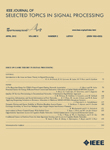
IEEE Journal of Selected Topics in Signal Processing
Advancing the Frontiers of Signal Processing KnowledgeIEEE Journal of Selected Topics in Signal Processing is a premier academic publication dedicated to the advancement of knowledge in the field of signal processing. Published by IEEE-INST ELECTRICAL ELECTRONICS ENGINEERS INC, the journal boasts an impressive impact factor that places it in the top tier of its category; ranked Q1 in both Electrical and Electronic Engineering and Signal Processing for 2023. Given its esteemed standing, the journal serves as a vital resource for researchers, professionals, and students alike, providing cutting-edge insights and developments that shape the future of signal processing. The journal encompasses a wide array of topics relevant to the evolving landscapes of electrical engineering and computer science, with particular significance in innovative applications and methodologies. As a platform for disseminating high-quality research, this journal remains essential for those seeking to stay at the forefront of this dynamic field. You can explore the latest contributions and findings, benefiting from the journal's influential status in the realm of signal processing.

Jordan Journal of Electrical Engineering
Pioneering Knowledge in Electrical Engineering and BeyondJordan Journal of Electrical Engineering, published by TAFILA TECHNICAL UNIVERSITY (TTU) in Jordan, serves as a critical platform for disseminating groundbreaking research in the fields of electrical engineering, energy systems, and related disciplines. With an ISSN of 2409-9600 and an E-ISSN of 2409-9619, the journal is committed to promoting advancements in energy engineering, biomedical applications, control systems, and signal processing among others. Despite its recent establishment in 2023, it has been indexed in multiple categories within Scopus, receiving rankings that reflect its emerging role in the academic community. Researchers and professionals are encouraged to contribute and access cutting-edge articles through open access options, ensuring that knowledge is readily available to all interested parties. As the journal continues to grow, it aims to bridge gaps in knowledge and stimulate dialogue, thereby supporting innovation and practical applications in the engineering sector.
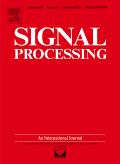
SIGNAL PROCESSING
Exploring Breakthroughs in Signal TechniquesSIGNAL PROCESSING is a premier academic journal published by Elsevier, dedicated to advancing the field of signal processing. With an impressive impact factor and ranked in the Q1 category across various disciplines such as Computer Vision and Pattern Recognition, Control and Systems Engineering, Electrical and Electronic Engineering, and more, the journal stands as a highly respected resource within the academic community. Since its inception in 1979, SIGNAL PROCESSING has provided a platform for researchers and professionals to disseminate their findings on innovative algorithms, techniques, and applications related to signal analysis and processing, making significant contributions to both theoretical and practical aspects of the discipline. The journal is accessible through institutional subscriptions, ensuring that scholars and students can engage with cutting-edge research and foster advancements in technology and methodology. Readers can expect to find a wealth of articles that promote critical discourse and facilitate further research, making SIGNAL PROCESSING an essential reference for anyone involved in the fields of signal processing and related areas.
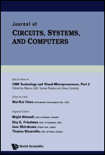
JOURNAL OF CIRCUITS SYSTEMS AND COMPUTERS
Driving Technological Advancement in Electrical EngineeringJOURNAL OF CIRCUITS SYSTEMS AND COMPUTERS is a pivotal publication in the fields of Electrical and Electronic Engineering as well as Hardware and Architecture, published by World Scientific Publishing Co. Pte Ltd in Singapore. With an ISSN of 0218-1266 and an E-ISSN of 1793-6454, this journal has contributed significantly to the discourse surrounding innovative research and technological advancements since its inception in the late 1990s. It currently holds a Q3 ranking in both relevant categories, reflecting its competitive stature and providing researchers, professionals, and students a substantial platform for disseminating findings. The journal covers a diverse range of topics, focusing on the design, analysis, and application of circuits, systems, and advanced computing technologies. Authors benefit from a rigorous peer-review process, ensuring high-quality publications that drive the field forward. The journal's commitment to excellence underscores its importance in fostering academic collaboration and knowledge exchange, making it a vital resource for anyone dedicated to advancing the domains of electrical engineering and computer science.
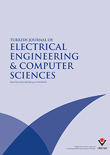
Turkish Journal of Electrical Engineering and Computer Sciences
Innovating Tomorrow's Technology TodayThe Turkish Journal of Electrical Engineering and Computer Sciences, published by the esteemed Tubitak Scientific & Technological Research Council of Turkey, serves as a pivotal platform for disseminating high-quality research in the interdisciplinary fields of electrical engineering and computer science. With an ISSN of 1300-0632 and an E-ISSN of 1303-6203, this journal spans a rich publication history from 1996 to 2024, contributing significantly to its field with a reputable standing in the Scopus rankings. The journal is categorized within the Q3 quartile for both Computer Science and Electrical and Electronic Engineering, reflecting its commitment to scholarly excellence, as evidenced by its rankings—#111 out of 232 in General Computer Science and #420 out of 797 in Electrical and Electronic Engineering. Aimed at researchers, professionals, and students, it encourages contributions that advance knowledge and foster innovation, bridging gaps between theoretical advancements and practical applications. With a strategic focus on open access, it ensures that critical findings are available to a global audience, enhancing the visibility and impact of research efforts originating from Turkey and beyond. This journal is not only a repository of knowledge but also a catalyst for collaborative research in a rapidly evolving technological landscape.

MULTIDIMENSIONAL SYSTEMS AND SIGNAL PROCESSING
Navigating Complex Systems with Precision and ExpertiseMULTIDIMENSIONAL SYSTEMS AND SIGNAL PROCESSING is a reputable journal published by SPRINGER that focuses on the interdisciplinary fields of applied mathematics, signal processing, artificial intelligence, and their applications in computer science. Since its inception in 1990, the journal has consistently contributed to advancing both theoretical and practical aspects of multi-dimensional systems and signal processing, making it an essential resource for researchers and practitioners alike. With an impressive 2023 ranking of Q2 in Applied Mathematics and notable positions in multiple computer science categories within Scopus, it demonstrates significant impact and relevance in its field. The journal addresses a wide range of innovative topics, providing a platform for high-quality research that explores complex systems and algorithms. Although not an open access publication, it offers various options for researchers seeking to disseminate their work in a highly regarded venue, ensuring visibility and engagement with the scientific community. Whether you are a seasoned expert or an emerging scholar, MULTIDIMENSIONAL SYSTEMS AND SIGNAL PROCESSING is dedicated to fostering collaboration and dissemination of knowledge in the ever-evolving landscape of technology and applied science.
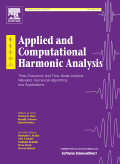
APPLIED AND COMPUTATIONAL HARMONIC ANALYSIS
Elevating Mathematical Discourse through Rigorous ResearchAPPLIED AND COMPUTATIONAL HARMONIC ANALYSIS is a leading journal in the field of applied mathematics, published by Academic Press Inc Elsevier Science. With an impressive impact ranking reflected in its Q1 quartile status and a Scopus rank of #84 out of 635 in Applied Mathematics, the journal highlights significant advancements and innovative applications of harmonic analysis and computational techniques. Established in 1993 and continuing through 2024, it offers a platform for researchers and professionals to publish high-quality original research and review articles. Although it does not operate under an open access model, the journal's rigorous peer-review process ensures that only the most impactful research is disseminated, making it an essential resource for students and scholars alike. By facilitating a deeper understanding of both theoretical and practical aspects of harmonic analysis, this journal plays a crucial role in furthering academic dialogue and collaboration within the mathematical community.

CIRCUITS SYSTEMS AND SIGNAL PROCESSING
Advancing the Frontiers of Circuit Design and Signal ProcessingCIRCUITS, SYSTEMS AND SIGNAL PROCESSING, published by Springer Birkhauser, is a highly regarded journal in the fields of applied mathematics and signal processing, boasting an impact factor that reflects its robust academic contributions. Established in 1982, this journal aims to disseminate cutting-edge research that bridges the gap between theoretical advancements and practical applications in circuit design, systems theory, and signal processing. With a Thomason Scopus ranking of Q2 in Applied Mathematics and Q3 in Signal Processing, it stands out as a leading resource for researchers, professionals, and students seeking to enhance their knowledge and innovate within these disciplines. The journal provides insight into the latest trends and technologies, making it an essential reading for those engaged in the development of signal processing methodologies. Although it does not offer Open Access options, it remains a critical repository of knowledge with deep relevance in today's tech-driven landscape.